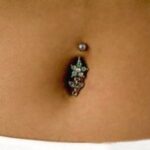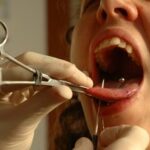Body piercing is a way of expressing oneself, to some, a way to keep up with the latest fashion trend. Getting pierced can be fun, exciting, and for some, an adrenaline rush. No matter the reason, millions of people get pierced every year, but how many know all the risks? Even though body piercing has been known to be a “Painful Pleasure,” the dangers are quite significant. Itis important for people to know just what risks are involved with getting a body piercing; these risks include sicknesses, diseases, and a variety of health problems. In addition, it is essential to know how to take care of a piercing; the knowledge of aftercare can help to prevent complications. Understandably, piercing has become very popular over the years, unfortunately,way more popular than the knowledge of the dangers. Although many people think body piercing cannot cause any harm, there are many factors that make body piercing dangerous.
First, individuals may have the assumption that all the body-piercing employees in a studio are trained professionals, however, this is not always the case. Smith (2004) reported, “Advocates say body piercing is safe if done in a professional environment.” A professional environment does not mean there will be no problems. It is not recommended that a person walks into a random studio and gets work done by any random person. There may be untrained piercers working in the parlor, and piercers who are not professional are extremely dangerous, and may cause harm to the client. This false assumption, that all employeesare trained professionals, is just one reason piercing becomes dangerous.
Second, unprofessional piercers are a danger to the customers. According to an article written by Tami Norman (2007), “Unprofessional piercers do not know the entirety of health risks or aftercare of piercing, therefore, cannot inform the customer.” Besides that, unprofessional piercers are not able to recognize the warning signs of infection, or previously infected areas that should not be pierced. Another factor that makes unprofessional piercers harmful is that he or shemay not know how and where to avoid veins, arteries, and body tissue that if punctured could cause serious injury or death. Getting a piercing by an unprofessional piercer is just as harmful as someone having a friend perform the piercing, or even someone piercing them self. There is a major lack of important knowledge, which poses several health risks.
Moreover, a piercing can become dangerous if the proper jewelry is not used. Proper jewelry means the right material, and the proper gauge. As Burn (2007) noted, “For a starter piercing you can only use one of three materials: surgical stainless steel, 18ct gold, and titanium.” These materials are safe and hypoallergenic. Burn (2007) also stated “Avoid any studio that offers you a piercing using some other material- they clearly haven’t done their research!” In addition to selecting the right material, the right type of jewelry is also crucial. Most jewelry is meant for a specific piercing, so it is imperative that a piercer does not insert a belly button jewel in an eyebrow piercing. Furthermore, the proper gauge jewelry should be used. If a piercing is done with a 14-gauge needle, then a 14-gauge jewel should be inserted, not a 16 or 12 gauge jewel. The wrong type of jewelry can cause allergic reactions, infections, and other problems associated with the healing process.
Additionally, piercing becomes dangerous if it is not cared for properly. A “horror story” related to aftercare was heard by the Chartered Institute of Environmental Health (CIEH). A 12-year-old girl pierced her naval. The piercing then became infected but she hid it from her parents. The girl ended up hospitalized with severe blood poisoning (“Body Piercing Health Alert,” n.d.). A person should know the aftercare of a piercing, along with medications to be used on the piercing, and things that should not be done after a piercing. Manuals can be found online, or at any piercing studio. Along with a new piercing comes a new responsibility, to take care of the piercing. A variety of infections can occur when a new piercing is ignored. The final, and most important factor that makes piercing so dangerous, is improper sterilization techniques. A case in the KomoTv news told the story of a woman who was hospitalized for a month and almost died from an unsterile tongue piercing. The woman ended up with medical bills, scars, and massive amounts of pain (KomoTv, 2007). This is just one example of why it is so important to make sure equipment and jewelry is properly sterilized. The tools that piercers use go through a rigorous sterilization process that can be found on the internet, or can be described by any professional piercer. An indicator that the needle and clamp have been properly sterilized is if the tools come out of a plastic bag. Needles are only used once, so every one should be new out of the package. The clamps, which are used to hold the skin, should come out of a sealed bag as well. Unsterilized tools are the most common reasons people get hurt from piercings, so it is essential that a person makes certain equipment is clean.
Getting a body piercing comes with several health risks, which may be caused by all the above-mentioned reasons. Health problems associated with piercing can be minor, such as getting a cold. Some stronger risks however, include negative reactions to the piercing. First of all, allergic reactions, similar to infections, are side effects, which can swell, turn red, cause itchiness, irritation, and may become very painful. The difference between the infection and the allergic reaction is that the infection can spread to other parts of the body. The allergic reaction will cease when the jewelry is taken out. Then, rejection or migration is another possible reaction to a body piercing. Rejection and migration occurs when the body pushes the jewelry out of the skin. The process of migration and rejection is not very painful but it is a waste of money. No matter where the piercing is, several negative reactions are possible, some which become quite expensive. An example of an expensive negative reaction would be from an oral piercing. The negative side effects from an oral piercing occur in the mouth, and sometimes, dental work needs to be performed. An article written in a website named Delta Dental states some of the problems dentist have found with people who have oral piercings. These problems include fractures or cracks in the tooth structure, pain, post-placement swelling, prolonged bleeding, gum injury, permanent numbness, loss of taste, and oral hygiene problems” (“Tongue piercing: A fad with serious dental and physical consequences,” 2005). Dental work is not only painful, but quite expensive as well. Finally, the obvious and most important health risks of body piercing are diseases. These diseases such as HIV and/or AIDS are deadly and cannot be cured. These diseases can be contracted from needles if the needles are not sterilized properly. Other viruses can be contracted such as Hepatitis B or C. Diseases are all dangerous health risks that come with body piercing. Some may be worse the others but nevertheless, they are hazardous and painful.
To ensure personal safety, and avoid all the aforementioned problems, a few things can be done prior to getting a piercing. First of all, it is a good idea to select a parlor that appears to be legitimate. Researching that parlor in advance to getting work done is a helpful way to learn about the business. Moreover, visiting parlors’ websites is a useful approach to get reviews, and familiarize oneself with the parlor. Additionally, a person can read about the company, how long it has been in business, and find out who works there. In the same way, researching a piercer is a beneficial step towards getting a successful piercing. This research will help to find the piercers’ previous work, short biography’s, and how long they have been piercing. When a suitable parlor is found and visited, there are some things a person should take note of. When entering the shop, it should be clean and organized. The individual rooms should also have a neat appearance. There should be a reception area where customers are greeted. In the reception area, the customer can and should discuss what piercing is desired, price, complications, and questions. Licenses of the body piercing employees should be visible on the wall, for everyone to see; it is suggested that potential customers read these prior to getting pierced. Having the license’s on the wall ensures that the employeesare all professional’s, and have been trained properly. Employees should be friendly, accommodating, and not forceful. Knowing what to look for in a piercing studio can assist in ensuring safety and feeling comfortable. A person should trust a piercer who is going to be inserting a needle into his or her body.
Educating oneself about the reasons for danger, the types of dangers, and how to prevent such dangers associated with body piercing will assist in receiving a successful and safe piercing. Body piercing is fun, exciting, and an act of self-expression. There is nothing wrong with getting pierced, just remember the important facts and risks. Several piercings are done without problems, but just because one was safe, does not mean every one is; just ask those few unfortunate people who have suffered massive injury or trauma due to piercing, he or she will say differently. People will continue to get pierced despite the dangers, with research and precautions, they can minimize risks. If a body piercing is researched, done correctly, and taken care of, a person will have a successful piercing and be completely satisfied with the entire experience.
REFERENCES:
BBC (n.d.). Body Piercing Health Alert. Retrieved October 2, 2007, from http://news.bbc.co.uk/1/health/1540571.stm
Burn, S. (2007). Tips for choosing the right material for your body jewelry. Retrieved October 12, 2007, from http://www.helium.com/tm/493241/american-society-testing-materials
Delta Dental (2005). Tongue Piercing: A fad with serious dental and physical consequences. Retrieved September 19, 2007 from http://www.deltadentalca.org/health/tonguepiercing.html
KomoTV (2007). Tongue Perking Nearly Kills Des Moines Woman. Retrieved October 2, 2007, from http://www.komotv.com/news/10094541.html
Norman, T. (2007). Body piercing: Why You Shouldn’t Do It Yourself. Retrieved September 19, 2007, from http://www.helium.com/tm/493411/three-important
Smith, K. (2004). In Depth: A Piercing Question When It Comes To Body Adornments. Delco Times. Retrieved September 19, 2007, from http://www.zwire.com/site/news.cfm?BRD=16758dept_id=18171&newsid;=11618418&PAG;=461&rfi;=9



